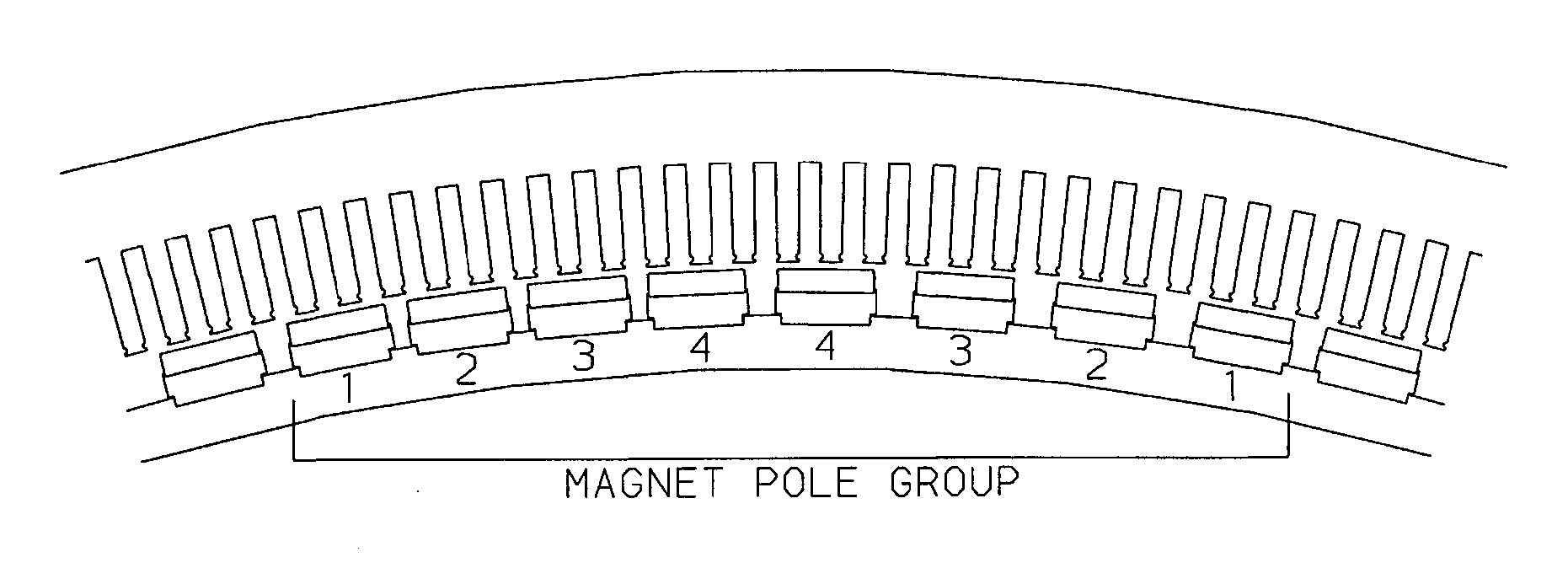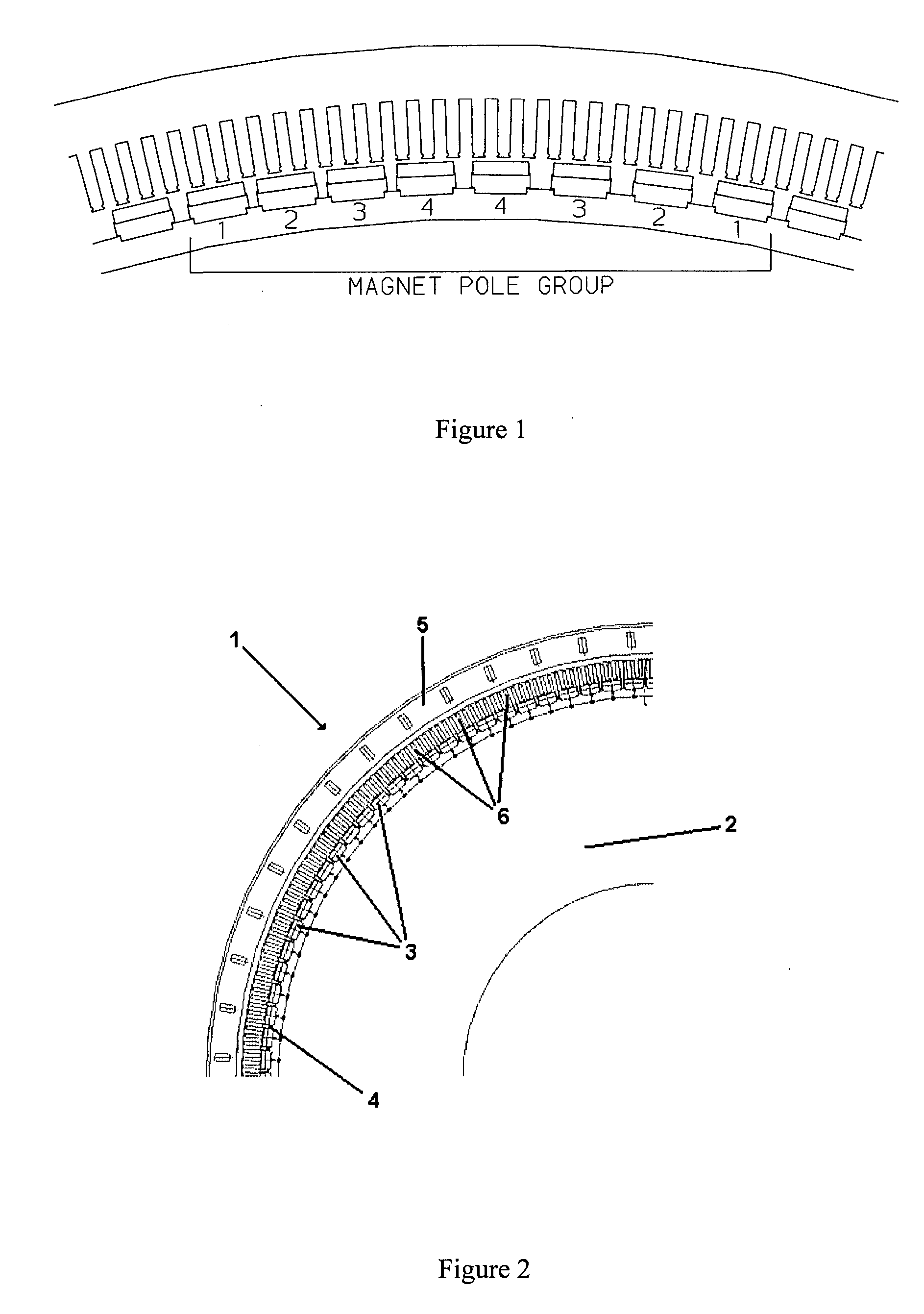Electrical machines with reduced cogging
- Summary
- Abstract
- Description
- Claims
- Application Information
AI Technical Summary
Benefits of technology
Problems solved by technology
Method used
Image
Examples
Embodiment Construction
[0062] A typical conventional construction of a low-speed large-diameter electrical generator 1 is shown in FIGS. 2 and 3. The rotor 2 has one hundred and twelve magnet poles 3 mounted around its outer rim 4. The magnet poles 3 are equally spaced from each other such that they are equally spaced around the circumference of the rim 4. That is, the magnet poles 3 are each positioned in their reference positions and the reference angular magnet pole pitch is 3.21° (360° / 112). The rotor 2 is rotatably mounted within a stator 5 and there is an air gap 7 formed between the inner surface of the stator 5 and the outer surface 8 of the magnet poles 3. The stator 5 contains three hundred and thirty-six equally spaced winding slots 6 formed in its inner surface i.e. three winding slots per magnet pole. This equates to a reference angular winding slot pitch Sp of 1.07°, a third of the magnet pole pitch. Each winding slot 6 contains a portion of a stator winding (not shown) and the winding slots...
PUM
 Login to View More
Login to View More Abstract
Description
Claims
Application Information
 Login to View More
Login to View More - R&D
- Intellectual Property
- Life Sciences
- Materials
- Tech Scout
- Unparalleled Data Quality
- Higher Quality Content
- 60% Fewer Hallucinations
Browse by: Latest US Patents, China's latest patents, Technical Efficacy Thesaurus, Application Domain, Technology Topic, Popular Technical Reports.
© 2025 PatSnap. All rights reserved.Legal|Privacy policy|Modern Slavery Act Transparency Statement|Sitemap|About US| Contact US: help@patsnap.com



